 Expert's opinion
Expert's opinion
Expert's opinion
The article is a subjective view on this topic written by writers specializing in medical writing.
It may reflect on a personal journey surrounding struggles with an illness or medical condition, involve product comparisons, diet considerations, or other health-related opinions.
Although the view is entirely that of the writer, it is based on academic experiences and scientific research they have conducted; it is fact-checked by a team of degreed medical experts, and validated by sources attached to the article.
The numbers in parenthesis (1,2,3) will take you to clickable links to related scientific papers.
8 Exercises For Kids With Autism: Effective Workouts In 2024
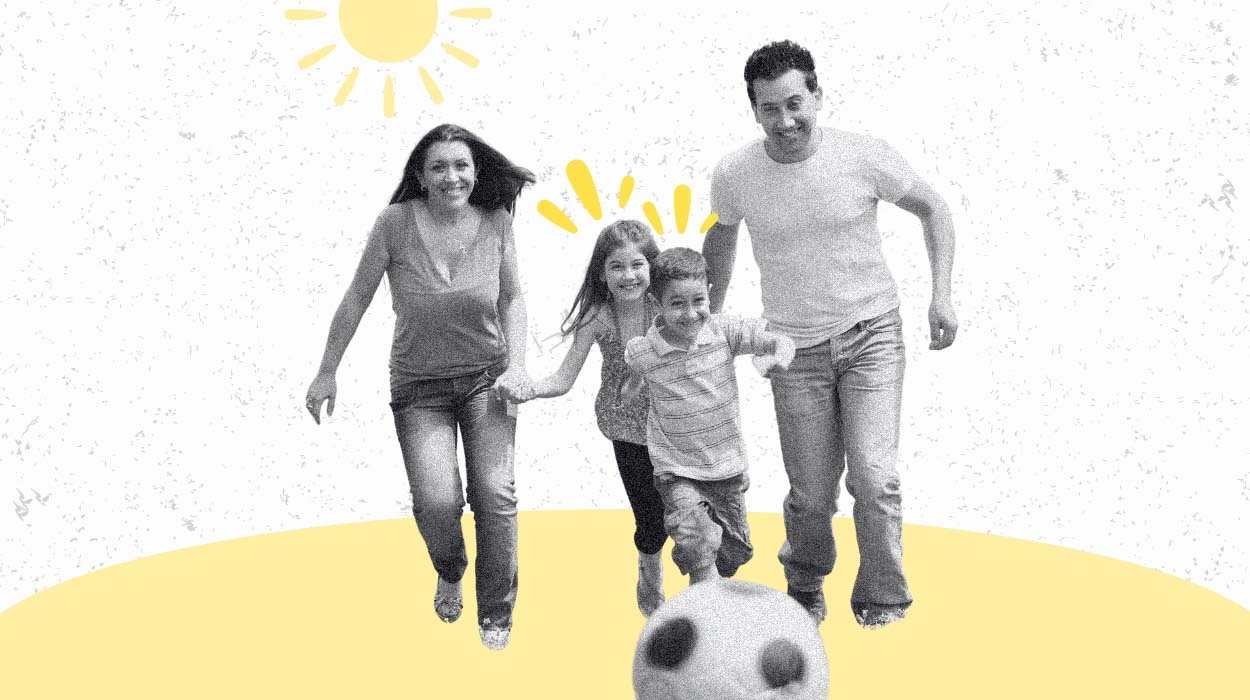
Children with autism typically have trouble expressing themselves. Most therapies for managing this condition do not get your kids to move around a lot.
However, autistic kids need exercise, especially since they are twice as likely to be obese[1] than their counterparts, and exercises for kids with autism aim to address this need.
Getting autistic kids involved in exercise can be a challenge. Nevertheless, if you stick to simple routines, you could help them meet their workout goals for a fit body and sharp mind.
Kids Exercises For Autism Spectrum Disorder
Here are some fun exercises that might be great for your kids with autism:
Exercises For Kids With Autism: Eight Important Workouts
Walking

A simple walk is an easy way to include exercise in your autistic child’s life. You do not have to hit 10 miles daily before your walk counts as exercise.
Start small exercises, a short distance from your home, and increase the distance as your child’s tolerance increases.
You could spice things up by taking your pet along. Your kid might get some comfort from having your dog around during the walk.
You do not have to stop for a little walk around your neighborhood. If your child is feeling up to it, you could try going hiking. Look up trails in your neighborhood that you think your child can handle.
Remember to pack up a snack bag, water, and anything else your child might need to have a good time.
Biking
Stationary bikes are excellent for getting some leg workouts into your child’s schedule.
Time on the bike will help turn up your kid’s heart rate and burn fat.
Want to include a nice view? You could include something here about traditional gym-style workouts being unappealing to kids and it’s better to make it into some sort of outdoor activity or game to keep them interested.
You might want to opt for regular bikes. A bike trip around the neighborhood would add some excitement to this workout.
Biking around the neighborhood could also be a fun group activity for the neighborhood kids that could help your child foster social relations.
Arm Circles
Taking a break from fast-paced exercises, arm circles are great for upper body workouts.
The best part about arm circles is that it is similar to autistic movements. Such exercises could help provide feedback[2] for your child and possibly reduce repetitive behaviors.
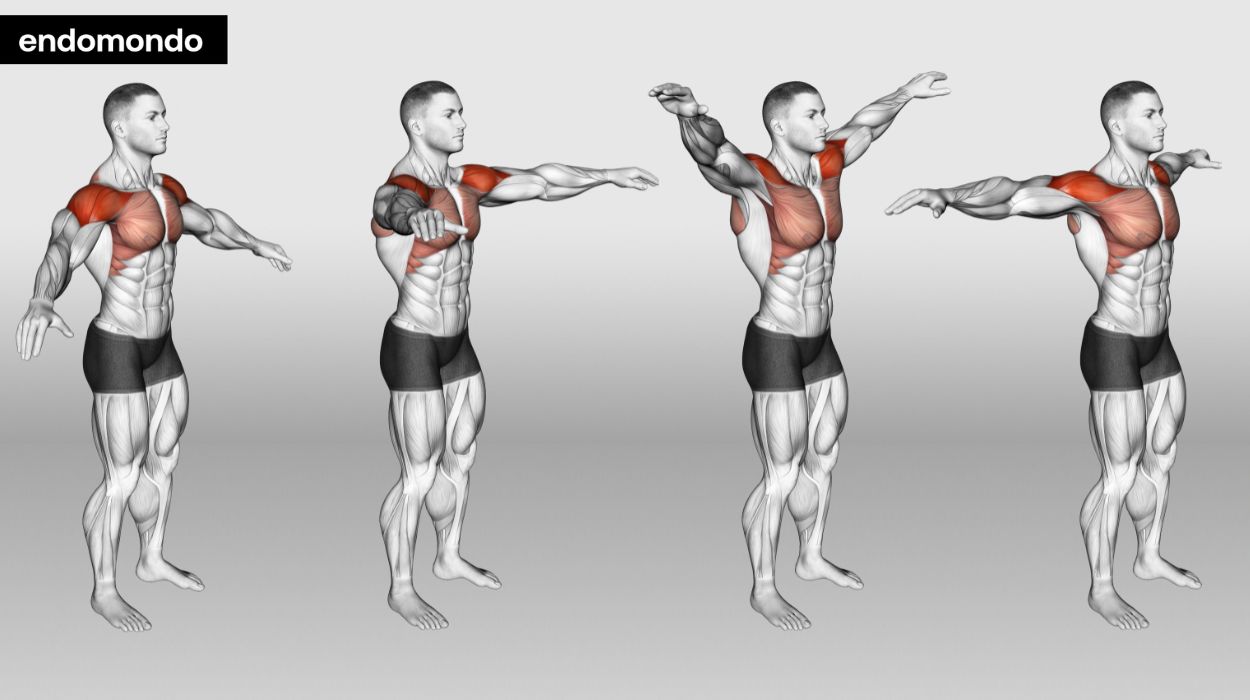
You do not need any fancy equipment just have your kids following:
How to do:
- Stand with their feet apart.
- Raise their arms to shoulder level at their sides.
- Spin their arms in small circles.
- Gradually make the circles bigger.
- Repeat the process 20 times.
- Start over in the reverse direction.
Tips:
- Start with small, slow circles to help children feel comfortable and gradually increase the size and speed as they become more at ease with the movement.
- Use visual cues like colorful circles on the floor or music with a rhythmic beat to make the exercise more engaging and enjoyable for kids with autism.
- Maintain a supportive and patient approach, offering praise and encouragement throughout the exercise to boost their self-confidence and sense of accomplishment.
Optimal Sets and Reps: two to three sets of 10-15 reps.
Medicine Ball Slams
Core strengthening exercises like throwing weighted objects like medicine balls might be excellent for your autistic child.
Medicine ball slams also help improve coordination and might have therapeutic benefits for your child. You could mention ball-slamming as an anger management technique here. We know that autistic kids get more easily frustrated than neurotypical kids.
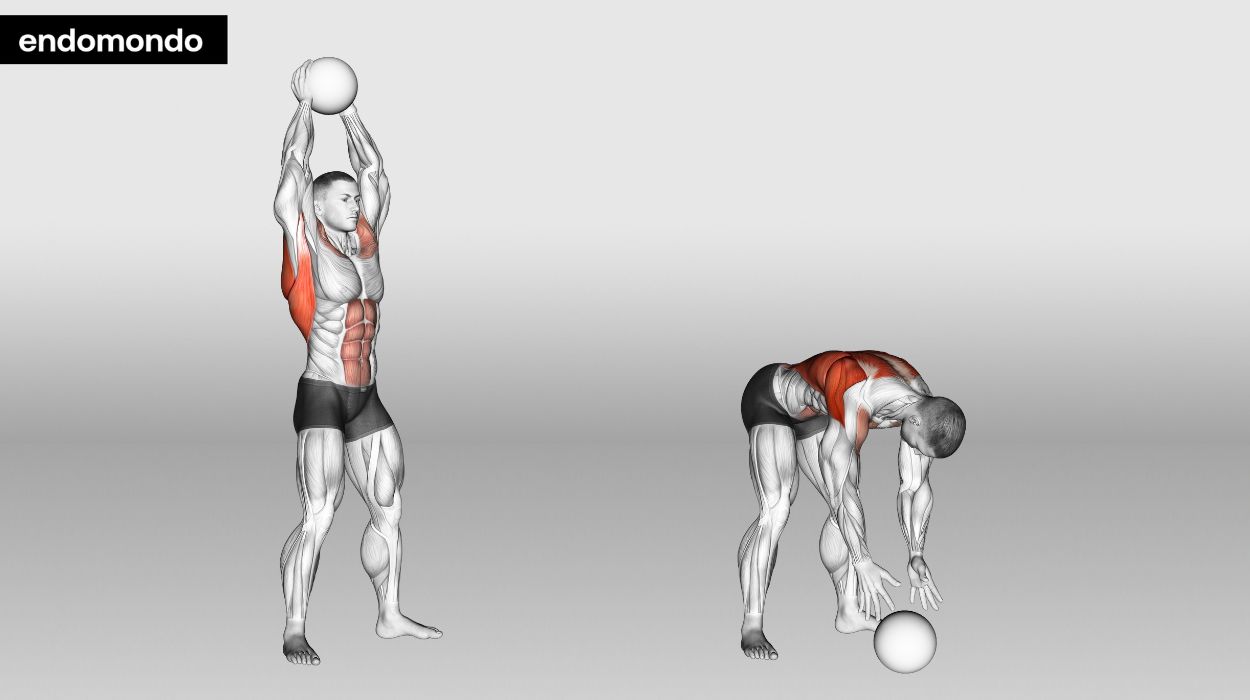
To get started, you need only get the medicine balls.
How to do:
- Stand with your feet apart and hold the medicine ball in your hands.
- Lift the ball over your head.
- Slam the ball on the ground with great force.
- Get in a squatting position to pick up the ball.
- Repeat the process 20 times.
- Throw the ball at targets to challenge and improve your kid’s coordination.
Tips:
- Start with a lightweight medicine ball to ensure safety and comfort. Teach proper form by demonstrating the slam motion and encourage kids to follow a controlled, rhythmic movement to release any pent-up energy.
- Use clear and concise verbal instructions, accompanied by visual cues or demonstration. This combination of auditory and visual guidance can help kids with autism understand and execute the exercise effectively.
- Foster a calm and supportive environment during the activity. Praise their efforts and progress, emphasizing the fun and stress-relieving aspects of medicine ball slams.
- Incorporate a countdown or rhythmic pattern when counting repetitions.
Optimal Sets and Reps: two to three sets of eight to 10 reps.
Star Jumps
A full-body workout such as star jumps could help your child with autism become more aware of their body and develop cardiovascular endurance.
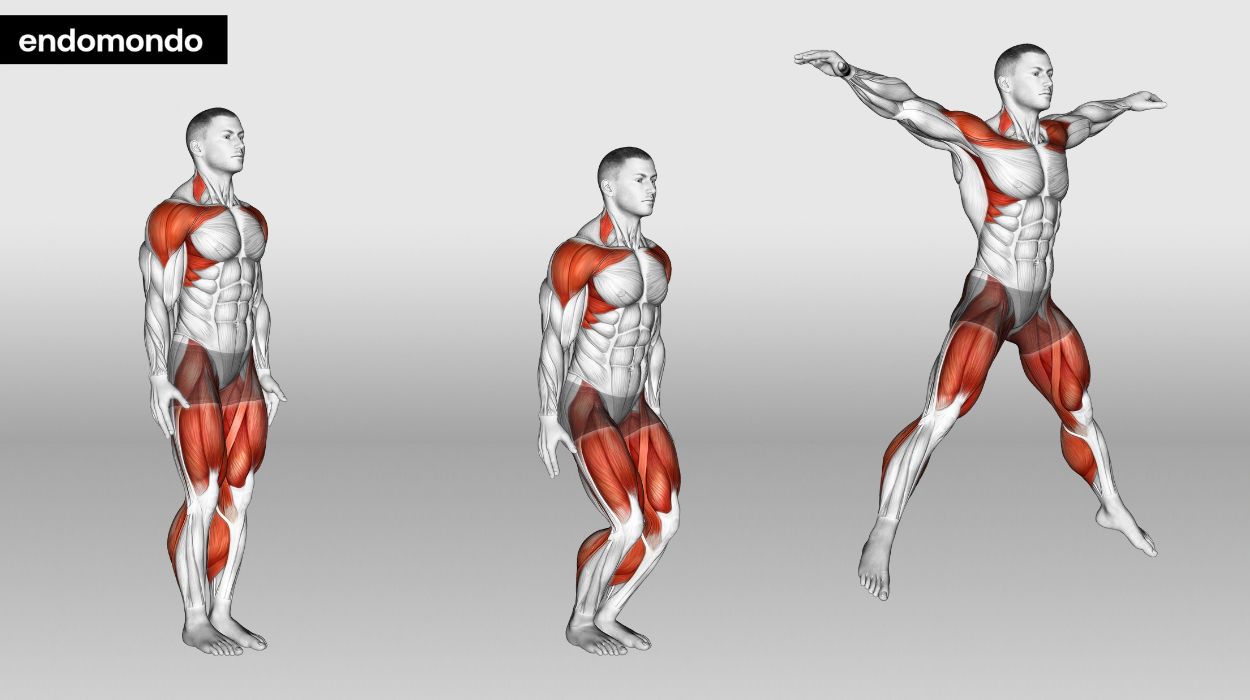
Star jumps also help strengthen leg and core muscles. You won’t need exercise equipment for this workout either. You and your child would need to:
How to do:
- Start by squatting with your arms tucked close to your chest
- Jump up quickly
- While in the air, extend your arms and legs into a wide X
- Land on the ground and return to the original squatting position
- Repeat the process 20 times.
Tips:
- Incorporate visual aids like flashcards or picture charts to demonstrate the sequence of the exercise. Visual cues can help children with autism better understand and follow the movements.
- Some children with autism may benefit from sensory input or sensory play. Consider using a soft, textured mat or providing a sensory toy before or after the exercise to help them self-regulate.
- Start with a lower number of repetitions, such as five to 10, and gradually increase as the child becomes more comfortable with the exercise. Monitor their response and adjust the sets and repetitions accordingly.
Optimal Sets and Reps: two sets of five to 10 reps.
Jumping Jacks
Jumping jacks are also full-body exercises that work on your lungs, heart, and muscles.
You need only some free space to start jumping and you’re on your way to burning calories and building endurance.
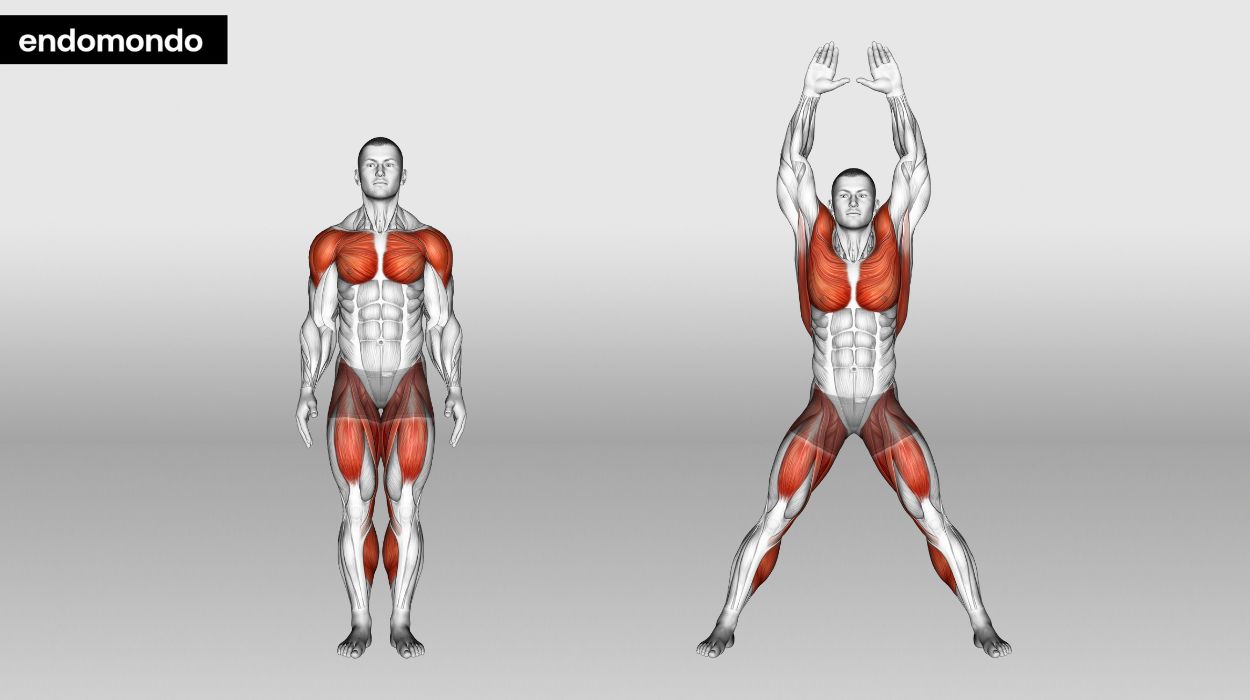
How to do:
- Start standing, arms at your sides and feet apart.
- Jump up and spread your feet wide while bringing your arms to nearly touch your head.
- Jump again and close your feet while returning your arms to your side.
- Repeat the process.
Tips:
- Begin with a few jumping jacks at a slower pace to help kids get accustomed to the movement. As they become more comfortable, gradually increase the speed and intensity to match their abilities.
- Incorporate visual aids like pictures or diagrams demonstrating the Jumping Jack motion. Visual cues can help children with autism better understand and follow the exercise.
- Establish a regular schedule for jumping jacks within their exercise program, ensuring predictability and routine, which can be comforting for individuals with autism.
- Ensure the exercise area is free from distractions, and provide a structured, organized space for performing to help children focus and feel more comfortable during the activity.
Optimal Sets and Reps: one to two sets of five to 10 reps.
Karate
Kids with autism can also benefit from martial arts like karate. It will help them develop body awareness and improve coordination.
Karate is also a great way for your kids to build strength.
If your kids are having trouble communicating and expressing themselves, karate could help improve[3] their language skills and communication deficit.
Yoga

Yoga could help your child better handle social settings. For instance, personal yoga mats could help your kid understand and respect personal space.
Following slowed-down facial and vocal cues could also help your autistic child develop imitation and other skills[4] that would be useful for building meaningful relationships.
Furthermore, yoga might help your kid improve flexibility, muscle strength, coordination, and spatial perception and relieve anxiety.
Benefits Of Physical Exercise For Kids With Autism
When we are looking for reasons to get on the treadmill, we usually think of weight loss, strength training, active play, and clearing our heads. These are the typical benefits of exercise that come off the top of our heads.
These benefits extend to autistic kids, too. Children with autism are two times as likely to become overweight or obese and would benefit from an effective autism workout to stay in shape.
So, if you have an autistic child under your care, you might need to work twice as hard to maintain a healthy weight.
Exercise benefits for children with autism go beyond weight loss and strength training. It could help with the development of motor and social skills[5] that help your kid build relationships.
For example, some kids with autism have trouble developing coordination for routine activities such as kicking a ball during a football game or handling scissors for an art project.
These limitations could hold your child back from potentially beneficial social interactions. However, exercise might help your kid develop the skills they need to participate.
Speech therapy is not news to many parents of autistic kids. Some kids need that push from speech and behavior therapy to overcome their communication deficits.
Exercises such as karate and yoga in addition to traditional behavior therapy help improve sensory processing issues and decrease communication deficits.
Group activities or autism exercise programs where your child is comfortable could also help them integrate better into social settings.
Exercise Tips For Kids With Autism
- Consult your doctor: Start your physical exercise routine with a doctor’s appointment to get the okay signal. Some exercises for overweight autistic children such as jumping jacks or star jumps can be hard on the ankles and you want to make sure your child is ready to handle such strain.
- Start slow: You are not training for a marathon, so there is no need to try all the exercises on the list on your first attempt. A few physical activities a couple of minutes each day will go a long way and you can bump things up as your child gets more comfortable.
- Stay simple: Stick to simple physical activities that do not require complex steps. Complex workouts can be overwhelming and your autistic child could have trouble keeping up.
- Pay attention to your kid’s needs: Check regularly to see that your child is not in pain during workouts. You definitely do not want your kids to get hurt while working out.
- Set a routine: Autistic children typically work better with routines, so you could set one up. A simple daily routine for exercise would be excellent for getting your child to stay open to the idea of exercise. You could mention something like a morning wake-up workout that mom, dad, and kids do together. It could include many of the exercises you mentioned like arm circles, jumping jacks, etc. This way it is more implementable than just suggesting each exercise on its own.
Conclusion
Including exercise in your autistic child’s routine is an excellent way to keep fit, build muscle strength, and improve motor skills. Moreover, it plays a crucial role in enhancing their sensory processing, social skills, and integration.
Alongside physical activity, paying attention to proper nutrition and providing essential nutrients tailored to your child’s needs can further support their overall development and well-being.
Balancing exercise and a nutritious diet is a holistic approach to helping your child thrive and improve their quality of life.
+ 5 sources
Health Canal avoids using tertiary references. We have strict sourcing guidelines and rely on peer-reviewed studies, academic researches from medical associations and institutions. To ensure the accuracy of articles in Health Canal, you can read more about the editorial process here
- Criado, K.K., Sharp, W.J., McCracken, C., Oana de Vinck-Baroody, Dong, L., Aman, M.G., McDougle, C.J., McCracken, J.T., L. Eugene Arnold, Weitzman, C., Leventhal, J.M., Vitiello, B. and Scahill, L. (2017). Overweight and obese status in children with autism spectrum disorder and disruptive behavior. [online] 22(4), pp.450–459. doi:https://doi.org/10.1177/1362361316683888.
- Lang, R., Lynn Kern Koegel, Ashbaugh, K., Regester, A., Ence, W.A. and Smith, W. (2010). Physical exercise and individuals with autism spectrum disorders: A systematic review. [online] 4(4), pp.565–576. doi:https://doi.org/10.1016/j.rasd.2010.01.006.
- Bahrami, F., Ahmadreza Movahedi, Seyed Mohammad Marandi and Sorensen Cc (2015). The Effect of Karate Techniques Training on Communication Deficit of Children with Autism Spectrum Disorders. [online] 46(3), pp.978–986. doi:https://doi.org/10.1007/s10803-015-2643-y.
- Shantha Radhakrishna, Raghuram Nagarathna and Nagendra, H.R. (2010). Integrated approach to yoga therapy and autism spectrum disorders. [online] 1(2), pp.120–120. doi:https://doi.org/10.4103/0975-9476.65089.
- Rafie, F., Shikh, M., Jalali, S. and Pourranjbar, M. (2015). Physical Exercises and Motor Skills in Autistic Children. Iranian journal of public health, [online] 44(5), pp.724–5. Available at: https://www.ncbi.nlm.nih.gov/pmc/articles/PMC4537639/.



